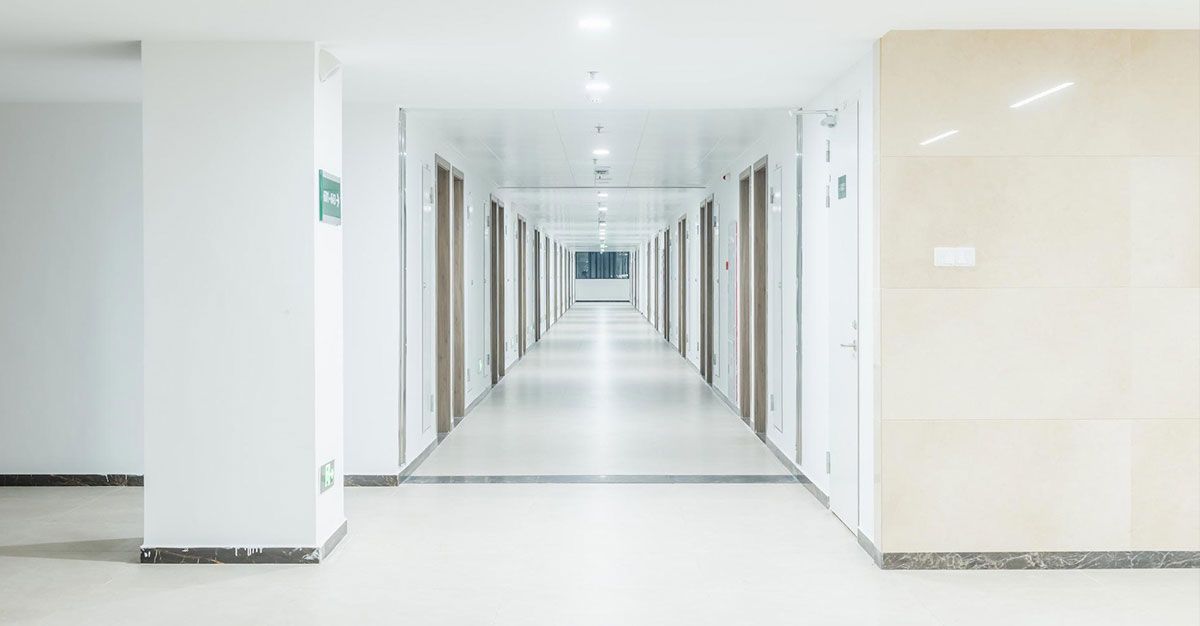Hur länge motstår RC2-dörren ett inbrottsförsök?
RC2-dörrar, även kallat säkerhetsdörrar RC2, är testade enligt den europeiska standarden EN 1627. RC2-dörren är en säkerhetsdörr byggd för att motstå planerade inbrottsförsök som utförs med hjälp av verktyg och en högre grad av våld under en längre stund, jämfört med en RC1-dörr. För att erhålla RC2-certifiering måste en dörr klara av att motstå inbrottsförsök i minst 3 minuter.
Standarden EN 1627-1630 består av fyra klasser: RC1 till RC6, där RC6 är den högsta klassen. RC2 är en av de vanligaste och mest efterfrågade dörrklasserna. Dörrarna används i många olika sammanhang, som i kontorsbyggnader, offentliga byggnader, butiker och bostäder.
Denna typ av dörr har genomgått noggranna och verklighetstrogna tester. Den bedöms att klara av inbrottsförsök med hjälp av mindre redskap som skruvmejslar, hammare, kilar och liknande. Dörren kan motstå en belastning på upp till 6 kN mot lås och 1,5 kN mot hörn. Dessutom ska dörren klara av ett större antal repetitioner av påverkan under en längre stund. RC2 är testad för ett simulerat inbrott med en total angreppstid på 15 minuter och en effektiv angreppstid på 3 minuter. Total angreppstid innebär att man har räknat med tid för vila och planering av nästa steg. Under effektiv angreppstid pågår aktivt bankande, sparkande och filande. Då detta är extremt energikrävande är en realistisk fördelning att det effektiva angreppet sker i 3 minuter av 15 minuters totalt inbrottsförsök.
Precis som gällande en RC1-dörr beror det på flera faktorer exakt hur länge en RC2-dörr kan motstå ett inbrottsförsök. Generellt kan man säga att en RC2-dörr kan klara av att motstå inbrottsförsök i flera minuter, upp till en halvtimme eller mer, beroende på hur utrustad och skicklig förövaren är. En RC2-dörr är en säkerhetslösning för de som vill ha en dörr som är en nivå säkrare än RC1. Dörrar i RC1 brukar vara standard i exempelvis lägenhetshus eller till förråd.
Hur testas dörren?
Dörrarna testas av ackrediterade laboratorier och måste uppfylla vissa specifika krav för att erhålla en RC2-certifiering. Testerna utförs genom att man försöker bryta upp dörren med varierande verktyg och tekniker. Under testerna utförs ett antal påverkningar för att bedöma dess motståndskraft. Man tittar exempelvis på tiden det tar att öppna dörren, vilken typ av verktyg som används och vilken typ av skada som orsakas på dörren.
Slutligen bedöms dörren också utifrån dess stabilitet och låsningsfunktion, vilket inkluderar låskistor, cylindrar, handtag, gångjärn och generell dörrkonstruktion. Om dörren fortfarande går att låsa eller ej efter angrepp är en viktig kontrollfunktion.
Var förekommer dörrar enligt benämningen ”Säkerhetsdörrar RC2”?
Det är vanligt att RC2-dörrar används i bostadsområden med högre risk för inbrott, som i storstadsområden eller i områden där det finns en högre koncentration av värdefull egendom. De används också i kommersiella byggnader, som köpcentrum, butiker och anslutande trapphus. Det finns ingen egentlig begränsning på en RC2-dörrs användningsområden, utan det är i stället en fråga om behov. I vissa fall räcker en RC1-dörr, exempelvis där det finns en yttre dörr med högre klass som ger ett tillräckligt totalskydd. I andra fall vill man ha en högre skyddsklass för att förlänga tiden för ett eventuellt inbrott. Men det kan också handla om att man önskar en högre trygghet eller vill ha en billigare försäkring genom en högre klassad dörr.
Är en RC2-dörr brandsäker?
Dörrar enligt benämningen ”Säkerhetsdörrar RC2” är nödvändigtvis inte brandsäkra. Brandsäkerhet mäts vanligtvis med en annan standard, t.ex. EI30, EI60 eller EI90, som bedömer dörrars förmåga att hålla eld och rök borta. En RC2-certifiering fokuserar främst på inbrottsskydd. Vanligtvis är dock en RC2-dörr brandklassad med EI30, vilket ger ett bra helhetsskydd. Även en icke brandklassad ståldörr är förhållandevis brandsäker jämfört med andra dörrtyper, genom dess robusta stålkonstruktion.
Vad är en RC2-dörr tillverkad av?
Den består av flera lager av högkvalitativa material, inklusive en yttre beläggning av stål eller aluminium som ger ett extra skydd mot angrepp. Dörren är vanligen utrustad med högkvalitativa låssystem, gångjärn och andra säkerhetskomponenter, och har vanligtvis som minimum en tjocklek på 40 mm. Eventuella glasurtag i dörren, både stora och små, har oftast säkerhetsglas för att förhindra att någon tar sig in genom att krossa rutan.
Dörrbladet består av en kärna av isolerande material, som mineralull eller skumplast, som ger termisk och akustisk isolering. För att öka dörrbladets stabilitet och styrka kan insidan täckas med en MDF-panel.
Dörrkarmen är tillverkad av förstärkt stål för att förhindra att den bryts upp eller skruvas loss. Låskistan är gjord av höghållfast stål för att förhindra att den bryts eller borras upp. Låscylinder och dörrhandtag är gjorda i högsta kvalitet och i material som stål eller mässing.
Utrustning och funktion
Dörrbladet på en säkerhetsdörr av RC2-klass kan som sagt ha en ytbeläggning av stål eller aluminium på utsidan, för ökad motståndskraft. MaxiDoors RC-2 dörr IB-BD har ett dörrblad byggt i 1.25 mm stålplåt med invändiga stabiliseringsstag och 4 mm brytskydd. Dörrbladets isolering består av formskuren mineralull med en total dörrtjocklek på 54 mm. Insidan av dörren kan vara förstärkt med en kombination av material, såsom stål, trä eller aluminium, för ökad stabilitet.
Låssystemet på en säkerhetsdörr av RC2-klass är också av högsta betydelse för dess säkerhetsegenskaper. Detta kan inkludera cylinderlås och låskista av högkvalitativt material som borstål eller mässing, vilket ger extra skydd mot manipulation och brytning.
Dörrhandtaget på en RC2-säkerhetsdörr kan ha en anti-manipulationsfunktion och extra skyddsegenskaper för att förhindra eller försvåra fysiska attacker. Detta kan uppnås genom en specialutformning av handtaget, materialval och ytbehandling, samt genom avancerade låssystem. Allt med målet att minska eller eliminera svagheter i dörrkonstruktionen. Exempel på detta är låsskydd, tryckhandtag och nödhandtag som enbart ger möjlighet att öppna dörren åt ett håll.
Utöver detta finns det flera andra funktioner som kan förbättra säkerhetsegenskaperna. Vanliga tillval inkluderar till exempel en dörrspion som ger möjlighet att inspektera vem som står utanför dörren innan man öppnar den, en säkerhetskedja som hindrar dörren från att öppnas från utsidan eller ett dörrstopp som förhindrar att dörren öppnas på ett oväntat sätt. Alla dessa funktioner bidrar till att skapa en mer svårgenomtränglig dörr.
Variationer och fördelar
Säkerhetsdörrar av RC2-klass kan ha olika designfunktioner och vara anpassade för olika användningsområden. Men oavsett typen av dörr är det viktigaste att den uppfyller säkerhetskraven. Här är några exempel:
-
Enkel dörr
Enkel säkerhetsdörr av RC2-klass som kan användas för att t.ex. skydda en entré eller ett rum.
-
Dubbel dörr
Dubbeldörrar kan användas för att skydda en bredare ingång eller en större öppning.
-
Branddörr
Säkerhetsdörr av RC2-klass kan också ha brandhämmande egenskaper för att skydda mot brand och rök.
-
Ljudisolerad dörr
Säkerhetsdörrar enligt RC2-klass kan ha hög ljudisolering för att minska ljudgenomsläpp. 35 dB är standard.
-
Dörr med glasinsatser
En dörr av RC2-klass kan ha glasinsatser med olika säkerhetsnivåer. Förstärkt skyddsglas är standard.
-
Dörr med ventilation
En RC2-klassad dörr kan ha ventilationsmöjligheter för en förbättrad luftcirkulation. Ett exempel är ventilationslucka.
Vilka materialtyper finns det på ”Säkerhetsdörrar RC2”?
Säkerhetsdörrar av RC2-klass kan tillverkas av olika material som stål, aluminium, trä och glas. Valet av material beror på kundens preferenser och tillverkarens design och säkerhetskrav.
-
Stål
Ett hållbart och starkt material som ofta används för att tillverka säkerhetsdörrar av RC2-klass. Ståldörrar kan vara täckta med en yta av trä, plast eller annat material för att ge en estetiskt tilltalande design.
-
Aluminium
Aluminium är ett lätt och starkt material som också kan användas för att tillverka säkerhetsdörrar av RC2-klass.
-
Trä
Ett traditionellt material som ofta används för att tillverka dörrar. Säkerhetsdörrar av RC2-klass kan tillverkas i massivt trä eller med en stålkärna täckt med trä för extra styrka.
-
Glas
Skyddsglas används ofta som fönstermaterial i säkerhetsdörrar av RC2-klass. Det kan användas som en hel eller delvis glasad panel på dörren och vara förstärkt med laminerat eller härdat glas.
En sammanfattning
Sammanfattningsvis är RC2 en standard för säkerhetsdörrar som fastställer de krav som måste uppfyllas för att dörrar ska erhålla certifiering. RC2-dörrar är en effektiv barriär mot inbrott och tillverkas i robusta material som stål eller aluminium, med extra förstärkningar i konstruktion, låsningssystem och gångjärn. Ett bra val för den som värnar om säkerheten, helt enkelt.
FAQ
Vilken typ av lås är vanligast på en RC2-dörr?
Vanligtvis är ett flerpunktslås den vanligaste typen av lås på en RC2-dörr. Detta låser dörren på flera punkter runt omkring ramen, vilket ger ökat skydd.
Hur påverkar tjockleken på dörrbladet säkerheten hos en RC2-dörr?
Ju tjockare dörrbladet är, desto mer motståndskraftig är dörren mot inbrottsförsök. Ett typiskt dörrblad för en RC2-dörr är vanligtvis mellan 42-50 mm tjockt.
Vilka typer av tester utförs på en RC2-dörr för att kontrollera dess säkerhet?
RC2-dörrar testas ofta genom olika inbrottsförsök med verktyg som skruvmejsel, hammare och kilar. Dörrarna testas också för att se hur väl de klarar av att motstå brand, ljud och vattentryck.
Vilken är skillnaden mellan en RC2-dörr och en vanlig dörr?
Skillnaden mellan en RC2-dörr och en vanlig dörr ligger i dess motståndskraft mot inbrott. En RC2-dörr har en högre säkerhetsnivå och har konstruerats och testats för att motstå en tuffare nivå av inbrottsförsök och andra hot.
Kan jag anpassa min RC2-dörr efter mina önskemål och stil?
Ja, det finns en mängd olika alternativ för material, färg, design och tillbehör som lås och handtag för att skapa en dörr som passar olika typer av byggdesign.





